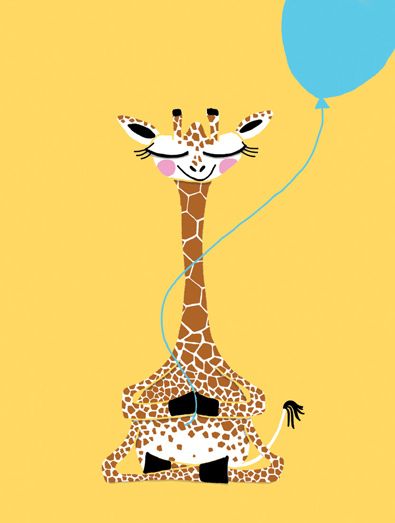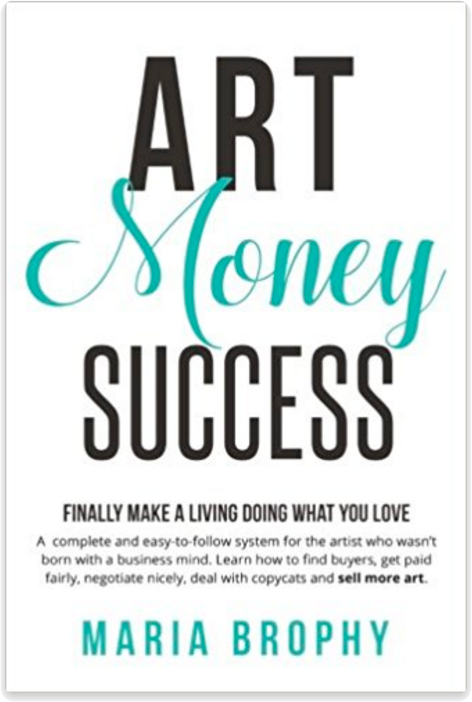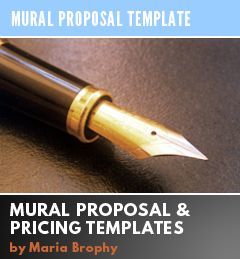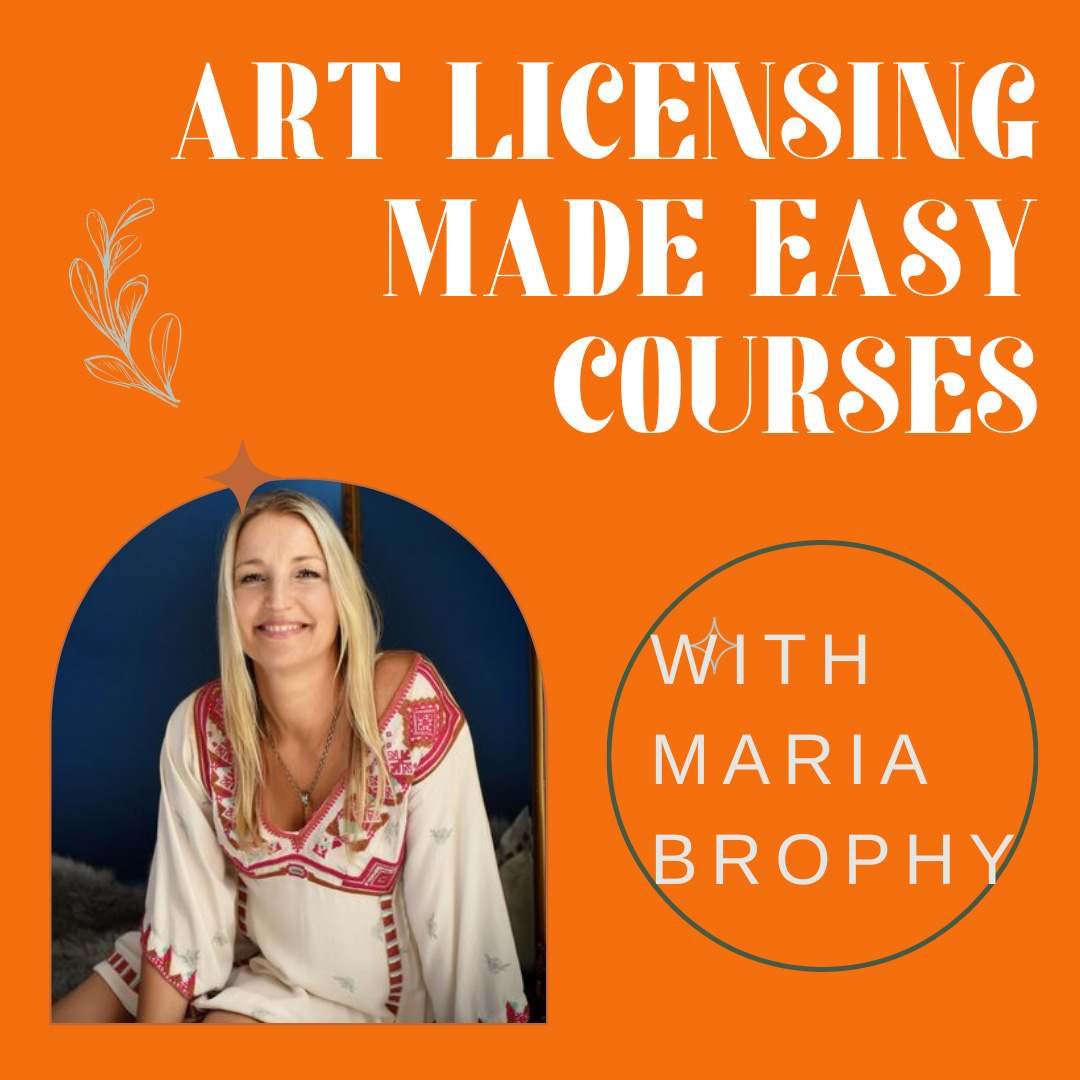 (Artwork by the wonderful, fun and talented Sara Jane Franklin. Check out her blog here!)
(Artwork by the wonderful, fun and talented Sara Jane Franklin. Check out her blog here!)
When Drew and I started showing his art at trade shows, the mission was to generate interest from publishers so that we could license Drew’s art to them.
The first year we exhibited at License Expo in New York, we had no idea what to expect, but we were excited!
We spent many months and a lot of dough, putting together a lively, interesting exhibit. The plan was to meet new prospects, close deals, and make some money!
But, there was one question that would regularly stump us.
A prospect would often walk into our booth, look around, and say “I love what you have here. How much do you charge?”
There is no way to answer that question, without knowing who, what, where, when and how. For example, how many images did they want? What did they want to use it for? And for how long?
I eventually figured out that I don’t have to answer the question of “how much” on the spot. I realized that there is a process of putting a deal together, and when handled in the proper order, things go smoothly.
Its trade show season for many artists right now and many of my friends are going to be faced with this same situation, so I’m going to share my tips on how to move from the “interest phase” with a client to the “closed the deal!” phase.
Below are Five Steps that will help you close a deal for use of your artwork:
(and by the way, these 5 steps work for just about any kind of deal, not just Art Licensing)
1 – COMMUNICATION AND INFORMATION GATHERING:
When at a trade show such as License Expo or Surtex, if a manufacturer asks “What do you charge,” take the time to get to know the specifics before you answer.
Never give a price or royalty percentage until you have a clear understanding of what the company’s needs are first!
There are at least ten questions you should ask before making or accepting an offer. Questions such as:
How many images do they want? What is their target market? Are they currently selling to thousands of stores, or a few hundred? Do they want you to create new art, or use existing art? In which countries do they currently sell? What other artists or licensors do they currently work with?
Asking the right questions will help you to get to know your client well, and to understand what will be required of you.
Before quoting anything, you should understand what their company is about and make sure they want the same things you want, with regards to quality and where the products will be sold and an overall mission. (Some artists don’t want their art in Wal-Mart; this is an important point to discuss with a manufacturer who sells to Wal-Mart!)
Don’t give pricing or royalty rates on the spot, because you need time to think about it. Tell them you would like to follow up with them after the show. This gives you a reason to follow up with them a few days later.
Once you have gathered the information you need, take the time to research what the standard royalty rates are for the products they sell, and determine what you want to charge in terms of royalties and advances.
2 – FOLLOW UP AND MAKE AN OFFER: Once you know what you want, send it in writing. The method I use is one very commonly used in the licensing industry; The Deal Memo.
A Deal Memo is a simple document which outlines the main points in an agreement: royalty rate, advance payable up front, term of years, territory, etc.
Create your Deal Memo and email it in a PDF to the new client. In my email, I write:
Dear Mr. Client,
As promised, attached is a Deal Memo for an Art Licensing Agreement for your products.
Please review it and let me know if you have questions. If you agree with the details in the Deal Memo, I will create our license agreement and send that to you right away.
Thank you for this opportunity. I am looking forward to working with you!
Sincerely,
Maria Brophy
3 – NEGOTIATION / COME TO AN AGREEMENT: Often, a prospect will agree with exactly what I offered to them in the Deal Memo. I love when that happens!
But, sometimes they don’t agree to it all. They might want to offer a smaller percentage, or they don’t want to pay the advance requested, or they want something else that you were not planning to give. This is where you have to work it out.
Negotiating is not so much a “haggling” but more of a “getting to understand why the other party is asking for what they ask for.”
Being a good negotiator requires being good listener and coming to understand what is important to your client, and then helping them understand what’s important to you.
If the client does not agree to one of the items you requested, find out why. Call them. A phone conversation is so much more efficient than by email at this point.
If something is very important to you, and they don’t want to give it to you, let them know why it’s important to you.
I have found that 99% of the details can be worked out to everyone’s satisfaction, with effort.
And remember this: a good deal is a deal in which both parties are happy and feel good about it. The numbers actually have very little to do with it. It’s all in how you feel.
If a deal feels bad to you, then don’t agree to it.
4 – CONTRACT SIGNING / ADVANCE PAYMENT: Once you come to an agreement on the basic terms, issue your licensing contract to the client – send it via email in a PDF (never send it in a Word document that can be changed by the client without your knowledge.)
Many artists wonder if they should use their own contract or if they should use the clients’. It’s always best to have your own contract, for the obvious reason that your own contract will protect you best. I find that often a client’s contract is not a good thing for the artist, because it will have a lot of Red Flags in it, or it will be missing some key components that protects the artist. (Check out the Artists Short Licensing Agreement Template Package as a starting point for your own contract.)
It’s okay to use the clients’ contract, but if you do, read it very carefully and make sure you ask for them to make changes to it that will protect you.
If an advance is being paid, it should be paid at the time of signing the agreement.
When I send my own license agreement for the client to sign, here’s how my email reads:
Dear Mr. Client,
Attached is our license agreement. Please review, print out two copies, and sign both. Please mail both copies to me, accompanied with your advance check, payable to Son of the Sea, Inc.
Once received, I will sign one copy and mail it back to you right away. At that time, I will begin work on the art and will send you the images you need. If you have any questions about the attached, please let me know.
Again, thank you for the opportunity. I look forward to working with you and your company!
Sincerely, Maria Brophy
If using your own contract, they may ask you to make changes to it. This is where the negotiating and conversation may pick up again. If so, refer to Step 3, above, and follow those instructions once again!
5 – PROVIDE THE ARTWORK: After everyone has signed the agreement, and you have been paid any advance or deposit payable up front, then you can start the real work!
(Think twice before beginning any work without a signed license agreement. This is not only for your protection, but for the company’s protection as well.)
Once you get into the habit of following this step-by-step process, you will feel more confident when conversing with potential clients.
When someone asks “how much” I say “let me find out more about what you need.” That statement is a huge conversation opener. I let them know that once I have a clear understanding of what they want, I’ll send them a Deal Memo with an offer.
Taking control of the process in this manner does two very important things:
1 – it implies that I’ve done this before and shows confidence, and;
2 – it demonstrates that I’m a professional, thus garnering greater respect.
I hope these five steps will help put you “in the driver’s seat” at your next trade show or networking event!
Please share in the comments what process you follow!
Maria xxoo
PS: If you want an Art Licensing Agreement template that makes it even easier for you to be in the “driver’s seat” – check out my Artist’s Short Licensing Agreement Template PACKAGE which is designed to make your life much easier!










13 Responses
Great post, Maria!
While I haven’t attempted any art licensing deals as of yet, your advice is universal. I especially like your points about not having to answer on the spot. It’s almost always better to delay and do your homework to make sure that a deal works for you. I also agree with your definition of “a good deal”.
You really nailed it with your closing points about this process demonstrating confidence and professionalism. Confidence in your work and product can go a long way. A solid process can quickly build your confidence.
Thanks for Sharing!
Stephen, thanks for the comment! I hope this simple format helps a lot of artists to close those deals.
Thank you so much for your insights Maria, you and Drew are a huge inspiration to me. Rock onwards.
Thanks, George, that’s so nice of you to say! 🙂
This process reminds me of why I am grateful to have an agent. Its such a valuable article, thanks Maria. Its a must read for anyone who is the position of selling their own art. I remember in the days when I was self-representing with my original paintings…selling in resort hotel lounges..the close and follow up was so crucial.
Cindy, you are one of the fortunate few artists that has representation. Good for you that you don’t have to worry about this stuff!
Nice work !Interesting to read)) I like this paper! Thanks)
Solid info as always, Maria!!! Thank you for sharing your knowledge.
This is great, Maria, as usual. Quick question: Do you accept signed contracts via email/PDF, or is there a reason you specifically want the hard copy in the mail? Thank you!
Great question, Colleen. Yes, you can accept the signed contract by email/PDF, as long as the contract doesn’t state that it has to be sent via certified mail (some contracts state that).
But, if there’s an advance being paid, it makes more sense for them to send you everything at once. By telling them to send you a signed copy with the check, you are directing them to pay you now, at signing, rather then later.
Maria Brophy, thank you for sharing your brilliant and inspiring insights. The subjects you write about have helped me so much in my start up art career. I’m an oil painter and a mural artist. The way you share information and experiences is so open and honest….you inspire others to want to “pay it forward”
Thank you for your grace.
Thanks Maria, the info and insight in these posts are invaluable. As you said many parts and points apply to any sort of dealings and agreements.
I always follow yourself and Drew, not only for guidance and advice on the more logistical side of business but also to be inspired in business and life in general.
Thank you for sharing and keep up the great work!!!
Very useful information and expressed with clarity.